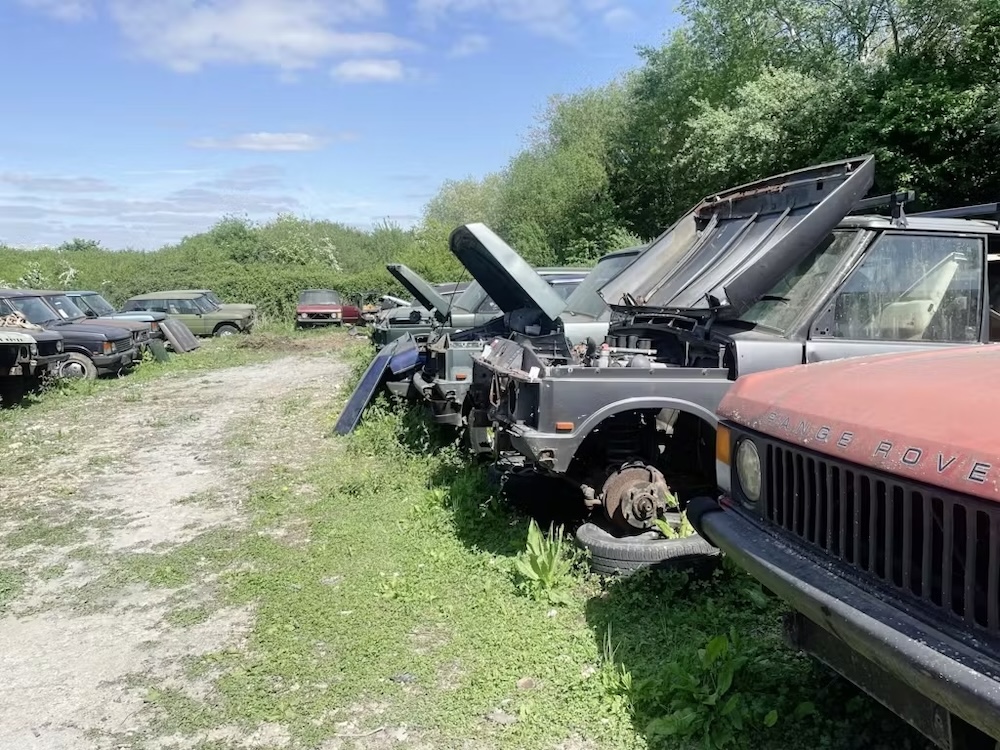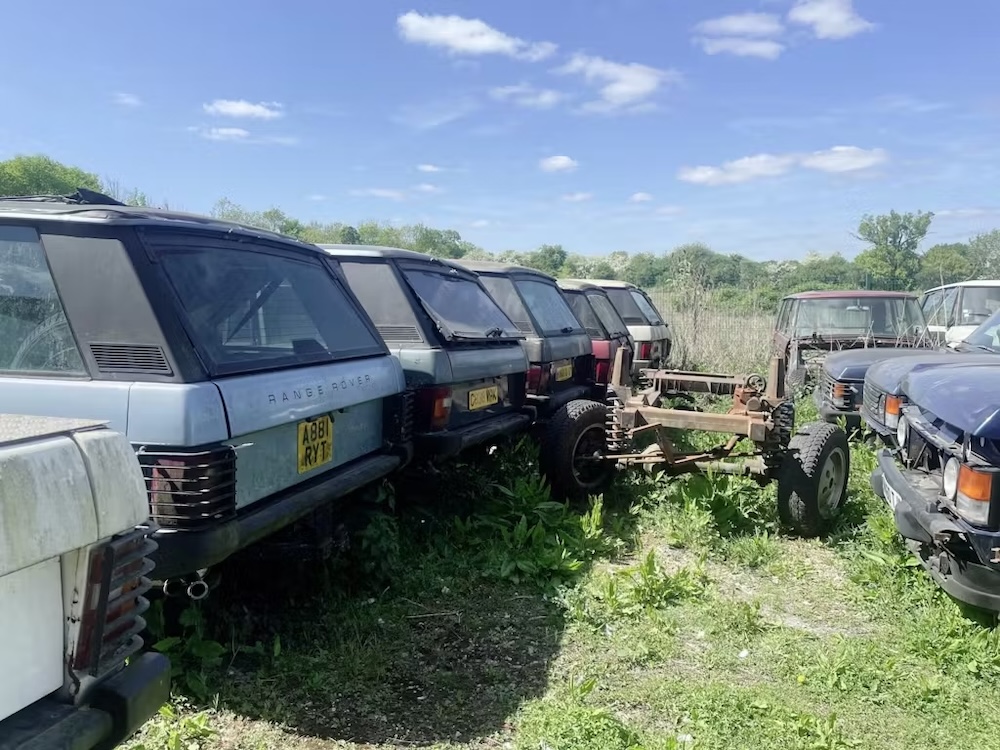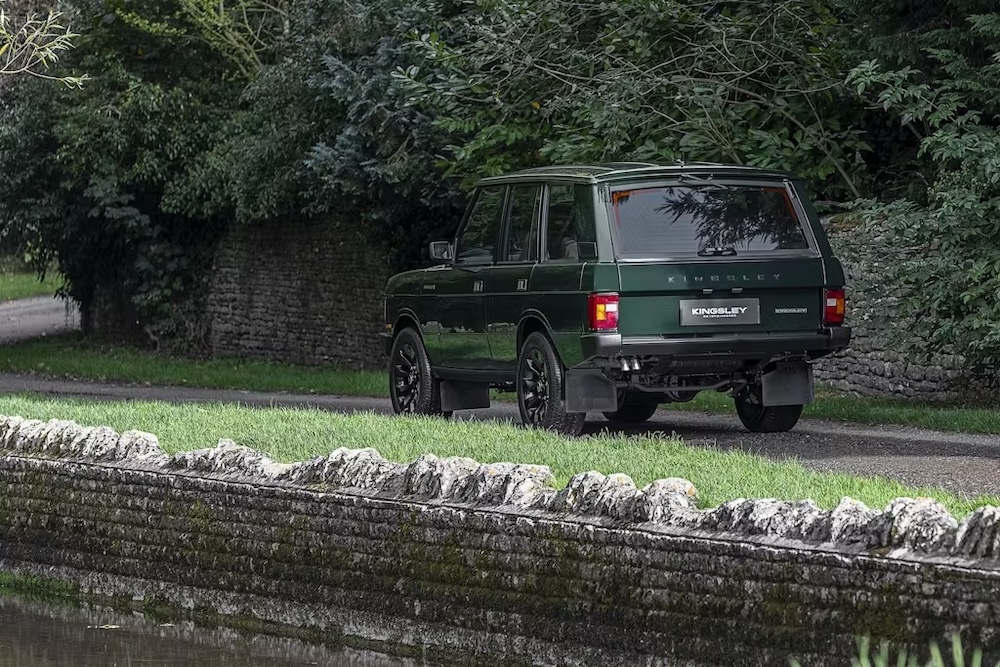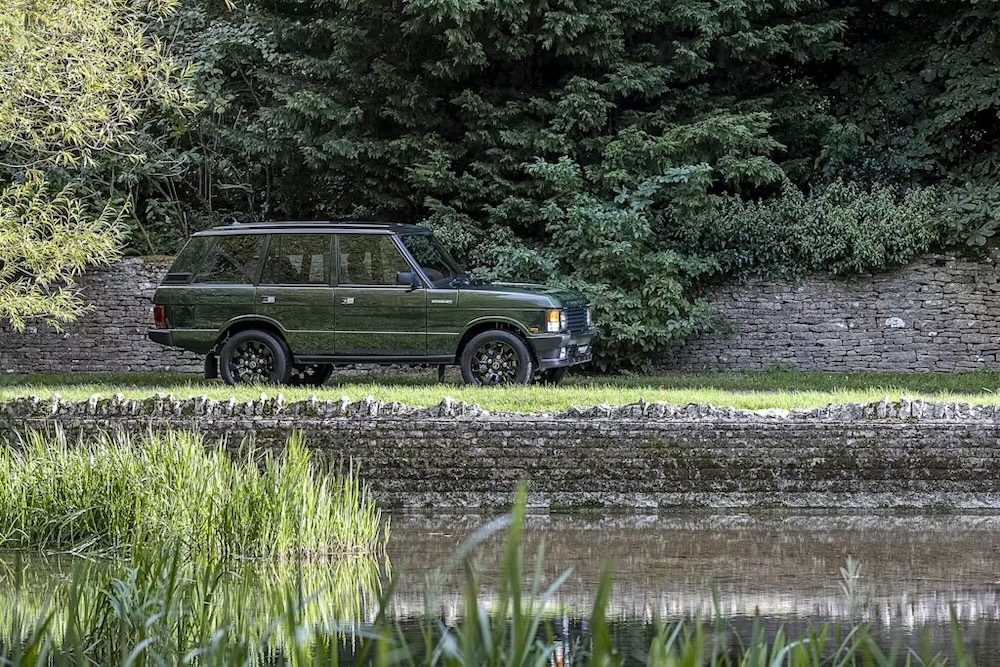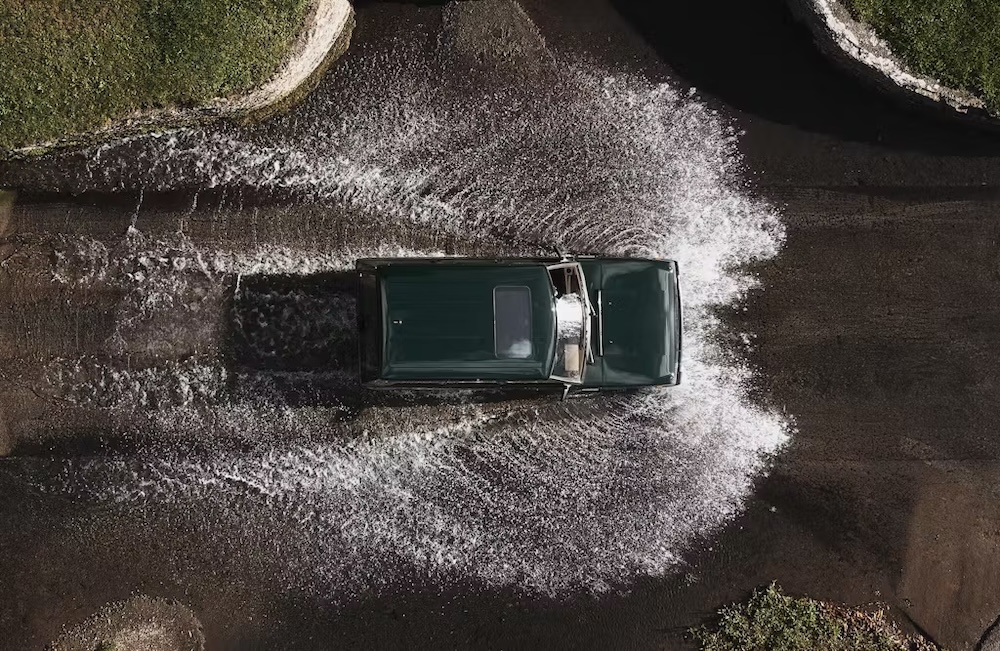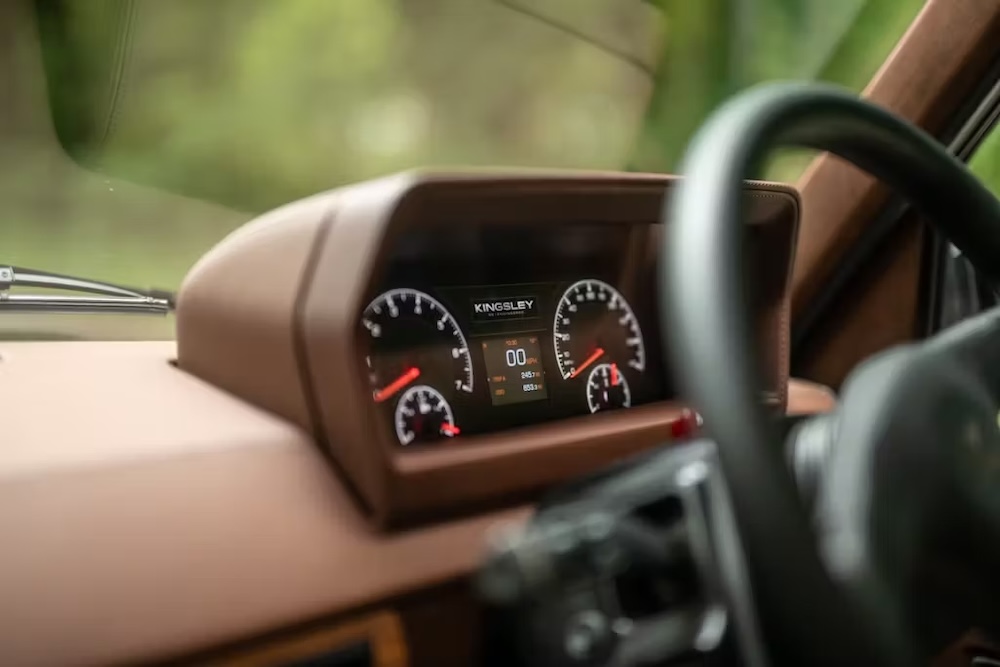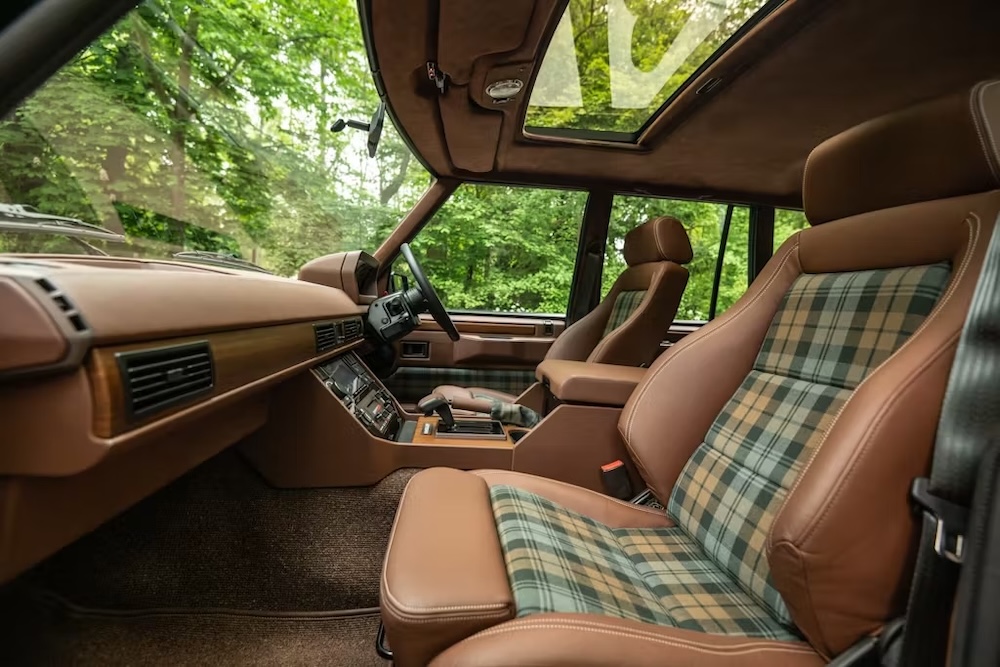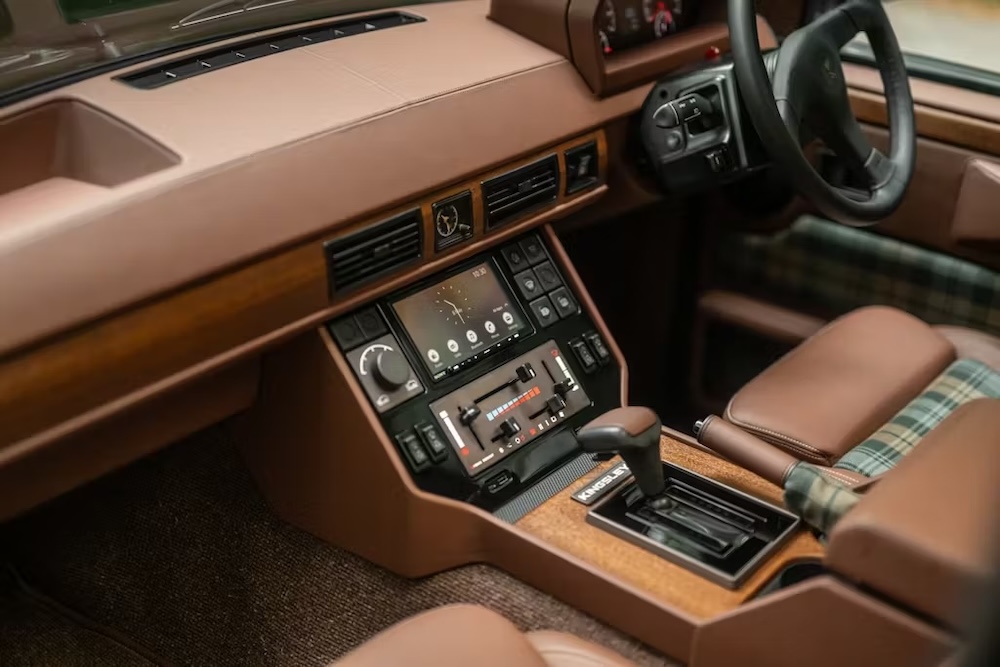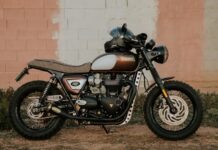“Welcome to the field of dreams,” says Kingsley Cars Managing Director John Sawbridge as he points at row after row of classic Range Rovers in various states of disrepair. It’s safe to say that Kingsley is not short of donor vehicles for its restomod Rangies. The company’s previous owners seemingly bought up every example they could find, sourcing rot-free Rovers from the warmer climes of Spain and bringing them back, only for them to sit in an Oxfordshire field. “It was all done with the right intention,” explains Sawbridge, “but not so well managed.”

Kingsley was in trouble, but a little over a year ago, help came from a loyal customer. Magnus Rausing owned a couple of Kingsleys and stepped in. Now, with backing from his family’s Tetrapak fortune, the company’s coffers are rather healthier.
With new investment has come a new model, the KSR, and it’s ambitious both in the extent of its re-engineering, and in its pricing—£260,000 ($345,000), with the only cost option being an engine upgrade from a Rover V-8 to a GM LS.
That considerable outlay gets you a “Kingsley Superior Restomod” and, in fairness, you will certainly feel superior when driving one.
Click here for further information
You can opt for the two-door or four-door. Wisely, those boxy bodies have been largely left untouched. Fully restored after being taken back to bare metal and repainted with several layers of gloss in Kingsley’s brand-new paint booth, the KSR is visually much like what left the Land Rover factory from 1970 to 1996.
It’s inside and underneath where the clever stuff happens. The effort’s very sympathetic, moving the underlying tech forward to the present day without changing the car’s character.
Swing open the door and step up into the cabin, and you’re greeted by a far more opulent interior than even the richest Rangie offered in its day. Our tester had tan leather as far as the eye could see, most notably along the entire dash and door cappings. The seats have lovely tartan cloth inserts, and there’s also a generous helping of wood trim, while the carpets are so deep and lush you’ll want to take off your shoes and scrunch your toes into the weave. Each customer car will be tailored to their desires from a vast array of materials and colors.
One of Kingsley’s biggest investments has been in an all-new dashboard and center console. In the past, the company would wrap the original, but it was never truly satisfied with the result. A redesign has also allowed the installation of cupholders, USB charging, and a head unit that’s Apple CarPlay and Android Auto friendly. Controls for the HVAC are updated but ape the original design. A new digital dash is easy to use and stylistically in keeping with the rest of the car. Except for the Sony logo on the touchscreen, you could be fooled into thinking that it’s an OEM cabin, such is the quality.
For the powertrain, the standard offering is a 4.6-liter version of the venerable Rover V-8 in High Torque tune with 274 hp and 310 lb-ft mated to a four-speed automatic. There’s TracTive adjustable suspension with five settings from firm to soft, but some of the Rangie’s off-road ability has been sacrificed as there’s no low range for the transmission. Think of it as more of a Road Rover.
With that in mind, I fire it up, feeling and hearing the unmistakable bassy beat of eight cylinders, and head out on a cross-country route. Immediately noticeable is a slightly lower driving position than a regular Range Rover of this vintage, and that’s a good thing, as it feels a little less agricultural, without any loss of the original lording-over-the-road sensation.
The steering isn’t finger-light or especially quick, but it’s easy to place, partly because the visibility is so good. There’s so much glass that it’s a bit like driving a greenhouse, so it’s a good thing the AC has also been upgraded. A downside of this abundance of glazing is that, despite adding plenty of sound-deadening, there’s still a fair amount of noise coming through—from the wind around the A-pillars, the rumble of rubber on road, and the V-8’s roar on kickdown. Kingsley does offer a quieter exhaust system, which is a tempting and seemingly more fitting option.
Acceleration is brisk enough, but if you want a neck-snapping surge, you’ll want to specify the 6.2-liter LS instead. For complex regulatory reasons, U.S. buyers are only being offered the Rover engine, but Kingsley could set you up with a partner firm to swap out the powertrain if you wanted. A future option could also be electric, says Kingsley—the company believes that there may be demand for a battery version in the U.S. market. Talks with potential powertrain suppliers are on the agenda.
Meanwhile, the partnership with TracTive on suspension is already a successful one. A regular Range Rover Classic can feel like a ship at sea when you get a little overenthusiastic, but here the body is far better-controlled. The ride’s a bit stiffer, but never crashy, and the trade-off is certainly worth it.
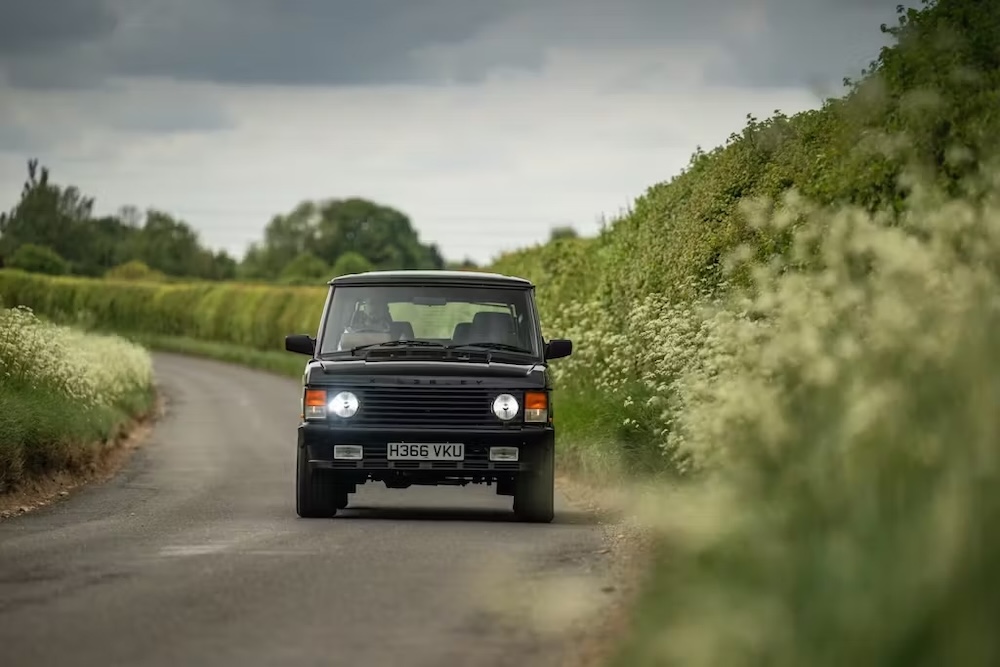
Whether the asking price is worth it is a thornier question. Rival Overfinch charges £350,000 ($464,000) for its equivalent, although that packs an LS as standard. So, in the rich realm of Range Rover restomods, Kingsley’s KSR actually starts to look quite reasonable.
Whether you’re ready to kit one out for yourself or just window shopping, the Kingsley configurator is worth a look. Mine’s a two-door in Bahama Gold.
more information: hagerty.com
Photo Credit By: hagerty.com
Author: Nik Berg for hagerty.com

